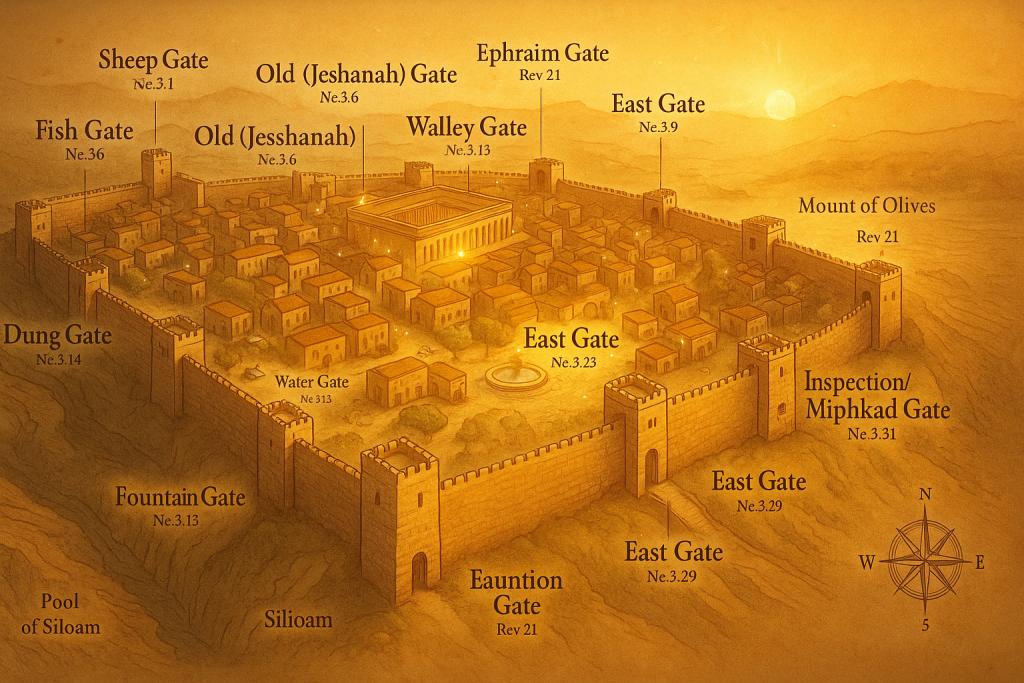In the Bible, the color blue carries a depth of symbolism that goes far beyond aesthetics. It is a sacred hue that often represents the heavens, truth, and divine revelation. Throughout Scripture, blue appears in sacred settings woven into the priestly garments, adorning the curtains of the Tabernacle, and even tied into the fringes (tzitzit) of Israelite clothing as a reminder of God’s commandments.

The biblical meaning color blue is deeply tied to spiritual elevation. It points the believer’s eyes upward toward heaven symbolizing purity, faithfulness, and divine presence. In Exodus, God commands that blue thread be used in the priestly robes, signifying holiness and dedication to His service. This recurring use reveals that blue is not just a color; it is a divine language of covenant and connection.
When we explore the spiritual meaning color blue, we uncover its message of serenity and truth. Blue mirrors the vastness of the sky and the calmness of the sea two creations that constantly remind humanity of God’s power and peace. Spiritually, this color calls believers to seek clarity, remain steadfast in faith, and rest in God’s eternal nature.
Across cultures and centuries, blue has remained a symbol of transcendence and devotion. In biblical context, it serves as a bridge between the earthly and the heavenly, inviting every heart to look beyond the visible and remember the One who reigns above.
Spiritual Meaning Color Blue
The spiritual meaning color blue reveals a profound reflection of God’s holiness, faithfulness, and truth. In Scripture, blue consistently points to what is heavenly, eternal, and pure. It symbolizes divine authority and reminds believers of God’s unchanging nature the same yesterday, today, and forever.
In Exodus 28:31–33, the high priest’s robe is commanded to be made entirely of blue, signifying service before a holy God. This garment was more than ceremonial; it represented spiritual purity and a life set apart for divine purposes. Similarly, in Numbers 15:38–40, the Lord instructs the Israelites to wear tassels with a thread of blue on their garments. This blue thread served as a daily reminder to keep God’s commandments and remain faithful to His covenant.
Prophet Ezekiel also gives a striking vision connected to the color blue. In Ezekiel 1:26, he describes the throne of God as being “like sapphire in appearance,” a vivid image that links blue with divine majesty and glory. This passage reinforces the biblical meaning color blue as a symbol of transcendence a glimpse into the holiness that surrounds God Himself.
Spiritually, blue invites believers to rise above the noise of earthly concerns and fix their hearts on eternal truths. It embodies serenity and trust, calling each soul to rest in God’s promises. The spiritual meaning color blue is, therefore, both a reminder and a calling to walk in purity, to live in faith, and to reflect the unwavering truth of the One who dwells in heavenly light.
Read also our article about: Black Cat in Dream Biblical Meaning.
Symbolism of Blue in the Bible
Throughout Scripture, the color blue is woven into the very fabric of worship and divine presence. In the Old Testament, it was more than a decorative color it carried deep symbolic meaning tied to holiness, obedience, and God’s glory. The biblical meaning color blue becomes especially evident in the way it adorned sacred spaces and garments, marking them as set apart for divine service.
In Exodus 26:1, God commands Moses to make the Tabernacle curtains of “fine linen and blue, purple, and scarlet yarn.” This detailed instruction reveals that blue was intentionally chosen to represent the heavenly realm, creating a physical reminder of God’s dwelling among His people. Similarly, the veil separating the Holy Place from the Most Holy Place was woven with blue threads, symbolizing the barrier between the human and the divine.
The high priest’s garments, described in Exodus 28, were also made with blue fabric, highlighting the spiritual meaning color blue as a symbol of purity and divine authority. The robe of the ephod, made entirely of blue, represented the priest’s role as a mediator between heaven and earth a living connection between the sacred and the human.
Moreover, blue was associated with royalty and divine kingship. Because the dye used to create it, known as tekhelet, was rare and costly, it became a color of majesty and reverence. This royal connection reflects how the heavens themselves vast and blue declare the glory of God (Psalm 19:1).
From the intricate tapestries of the Tabernacle to the vision of God’s throne “like sapphire” in Ezekiel 1:26, blue consistently symbolizes divine glory and obedience. The biblical meaning color blue reminds believers that true worship is not confined to rituals or symbols but expressed through faithfulness and a heart that seeks the presence of God in every act of devotion.
The Hebrew Word “Tekhelet” and Its Sacred Meaning
To understand the biblical meaning color blue, it is essential to explore the Hebrew word “tekhelet” (תְּכֵלֶת) the term used in the Old Testament to describe the sacred blue dye woven into garments and temple fabrics. This word appears multiple times in Scripture, most notably in Exodus, Numbers, and Ezekiel, where it represents divine holiness, covenant, and remembrance.
Historically, tekhelet was an extremely rare and valuable dye extracted from a sea creature, traditionally believed to be the Murex trunculus snail. The complex process of producing even a small amount of this deep blue pigment made it a symbol of both reverence and wealth. For the Israelites, wearing tekhelet was not a matter of luxury but of obedience and identity. It reminded them daily that they were a people set apart for God’s purposes.
In Numbers 15:38–39, God commands the Israelites to make tassels on their garments with “a cord of blue,” saying, “You will have these tassels to look at and so you will remember all the commands of the Lord.” The blue thread served as a physical and spiritual reminder to remain faithful, to walk in righteousness, and to live according to the divine covenant. This act transformed an ordinary color into a sacred symbol of devotion.
The spiritual meaning color blue within the context of tekhelet is profound. It embodies reverence for God’s holiness and the unbreakable bond between the Creator and His people. The Israelites viewed the blue thread as a bridge between heaven and earth a tangible link to the unseen presence of God.
Even today, tekhelet continues to inspire believers as a representation of purity, remembrance, and spiritual obedience. Through this sacred shade of blue, the biblical meaning color blue reveals not only divine majesty but also the call for every heart to live in covenant faithfulness and awe before God.
Applying the Biblical Meaning of Blue in Daily Life
The biblical meaning color blue is not confined to ancient garments or temple walls it continues to speak to the hearts of believers today. Spiritually, blue carries a timeless message of peace, purity, and faith. When we embrace its symbolism, we are reminded to live with calmness of spirit, trust in God’s guidance, and sincerity in our intentions.
In moments of uncertainty, reflecting on the spiritual meaning color blue can help anchor the soul. Just as the sky reflects God’s vastness and stability, blue encourages believers to rest in His promises and remain steadfast in faith. It reminds us that serenity is not found in the absence of challenges, but in the presence of divine assurance.
You can apply this symbolism in simple, meaningful ways. Surround yourself with blue during prayer or meditation to cultivate inner peace and spiritual focus. Let the color inspire you to speak truth, pursue purity, and reflect God’s light in your daily interactions. In this way, blue becomes more than a visual tone it transforms into a spiritual practice of remembrance and alignment with heaven’s values.
Ultimately, the biblical meaning color blue calls us to live in harmony with God’s truth and to seek His presence in every aspect of life. Continue exploring the symbolism of biblical colors and spiritual meanings at Meaning Biblical, and let each discovery deepen your understanding of how divine truths are woven into every shade of creation.
Read also our article about: What Does 50 Mean in the Bible.
The Color Blue in Christian Art and Worship
The enduring beauty of the color blue has never faded from the spiritual imagination of Christianity. From the early church to the great cathedrals of Europe, blue has remained a sacred color symbolizing heaven, divinity, and peace. Its continued use in Christian art and worship reflects the deep biblical meaning color blue a reminder of God’s presence, faithfulness, and eternal truth.
In sacred art, blue often appears in the robes of the Virgin Mary, representing purity, humility, and heavenly grace. Artists throughout centuries chose this color intentionally, using rare pigments like lapis lazuli to honor her role as the mother of Christ. Through her image, blue came to symbolize not only divine favor but also the spiritual bridge between God and humanity.
In stained glass windows, blue continues to illuminate churches with light that feels almost otherworldly. These vibrant shades fill the sanctuary with calm and reverence, creating an atmosphere where the believer’s heart is lifted toward the divine. The glow of blue light reminds worshippers of the heavens above the dwelling place of God and the serenity found in His presence.
Beyond art, the spiritual meaning color blue is woven into the rhythm of worship itself. In Christian liturgy, blue is often associated with seasons of reflection and anticipation, such as Advent, symbolizing hope and divine promise. Whether seen in vestments, mosaics, or sacred symbols, blue continually calls the believer to focus on purity of heart and the peace that flows from faith.
Even today, the biblical meaning color blue speaks through every hue that graces a chapel wall or a sacred painting. It is a color that connects the believer to centuries of devotion a silent hymn of heaven echoing through art, worship, and the soul’s longing for God’s eternal light.


